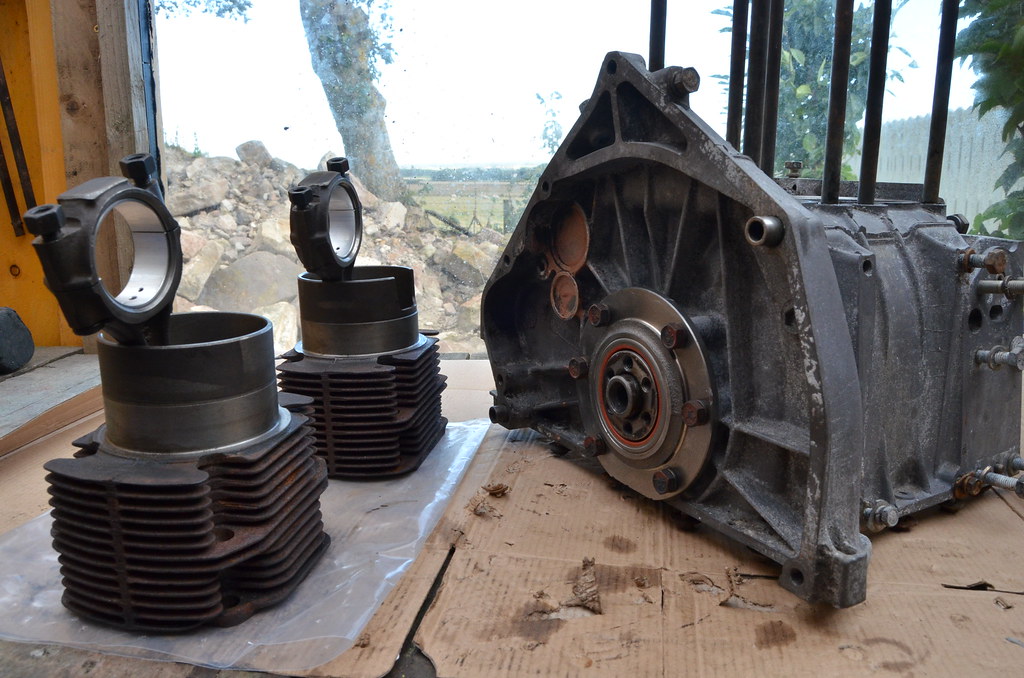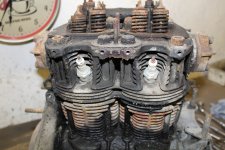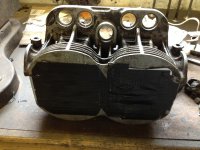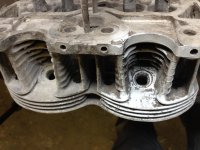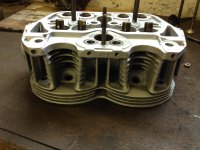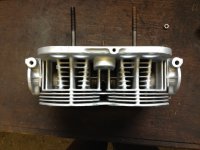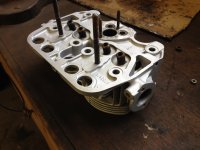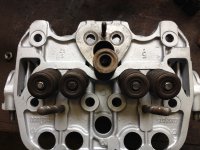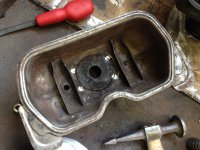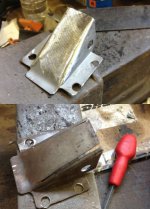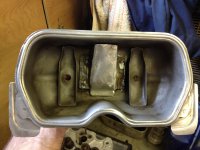After getting my head back from the machine shop. It was time for a clean up. They had recut the valve seats, checked the guides were ok and gave the head a quick skim as it was not exactly flat. Ooh a couple of extra bhp
I was going to get it vapour blasted, but that was going to cost about £50 and they wanted all grease, paint and dirt removed first.
Now I like things clean but barely any of the head is on display.
The head was in really bad condition in terms of dirt & grime. Even after a good wash in petrol/gunk remover the head had burnt on stuff of which I was not sure if it was paint, oil or dirt. All I know is it wasn't coming off.
I tried everything to remove it.
I even resorted to sandblasting. First off I covered all apertures and the valve guides with heavy duty tape so as to minimise any glass bead getting in unwanted places. It was tough going but it cleaned it quite well but really struggled in between the fins.
So I decided to go for using caustic soda.
Now I know you aren't supposed to use this on aluminium, but it does work! I mixed a small amount with water and gently used it on the casing with a toothbrush. It started to dissolve the gunk, but it does cause some discolouration to the alloy surface. It basically goes a dull grey colour.
I washed it down with water. Checked it and then gave a few areas a scrape with a screwdriver to cut through the heavy stuff. Then repeated the process about 5 times. You can actually see the alloy surface fizzing away
Make sure you do this outside though as it does give off a harmful gas.
Anyway it removed 99% of the gunk and left the fins nice and clean which will help with the cooling.
I did read somewhere (maybe on this site) that it has been known to paint the heads matt black. Cant see why really.
After a thorough clean with water, detergent, petrol and a good blow out with the air line it was now looking clean - a little grey but nothing a coat of high temp aluminium paint wont resolve.
I had to remove one broken engine cowling bolt from the head, re-tap any bolt holes and run a die down the head studs for the carb and rocker shaft.
A final bit of decoking with a rotary wire brush and then a lick of paint.
I'm quite impressed with how it came out.
Now all I need is a couple of O-rings for the inlet valves and I can install the valves. I had 2 in bag of gaskets I had but they are too small.


